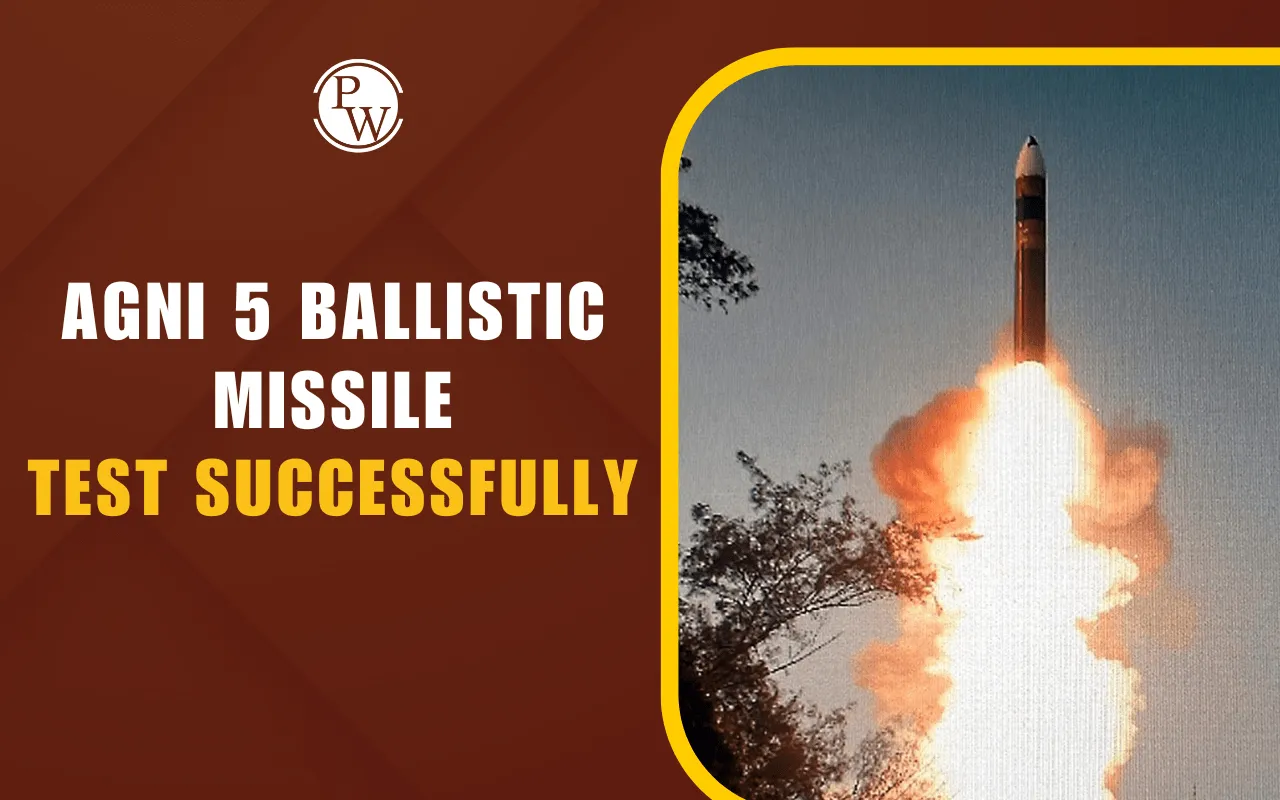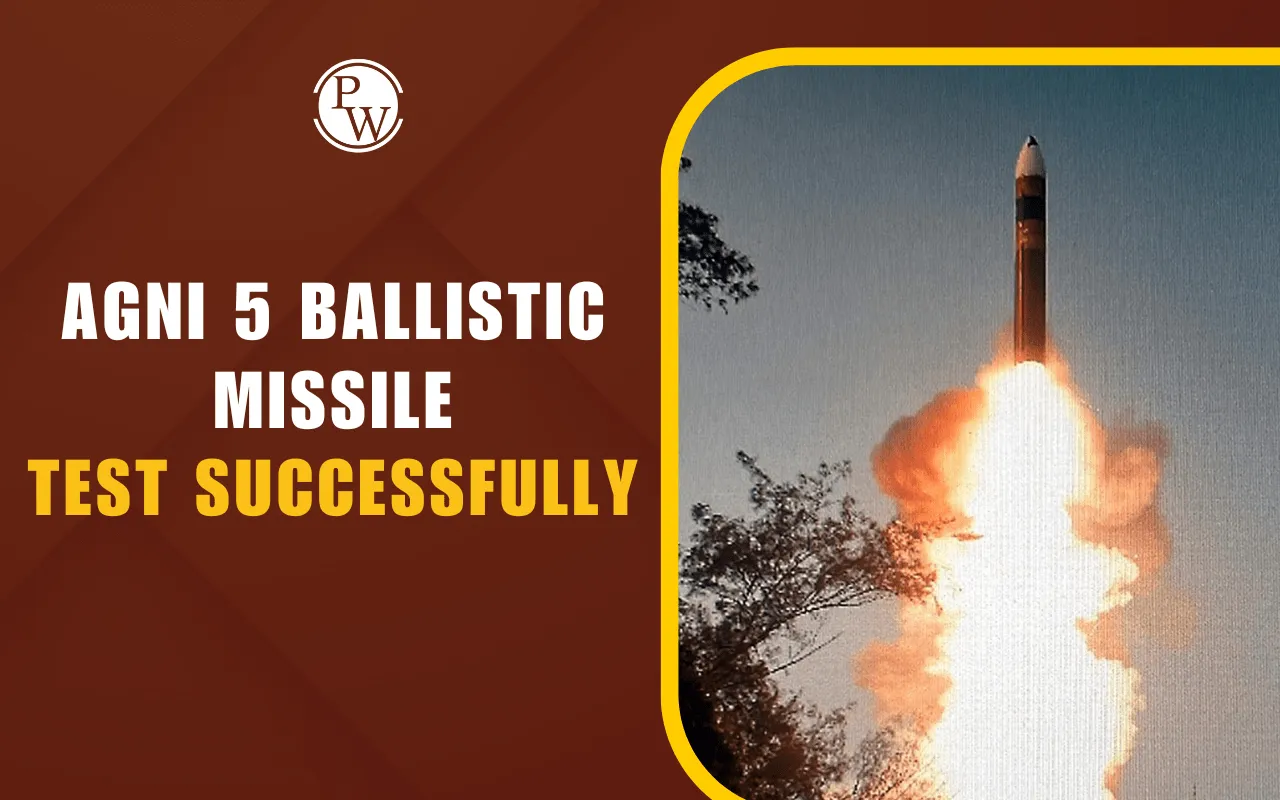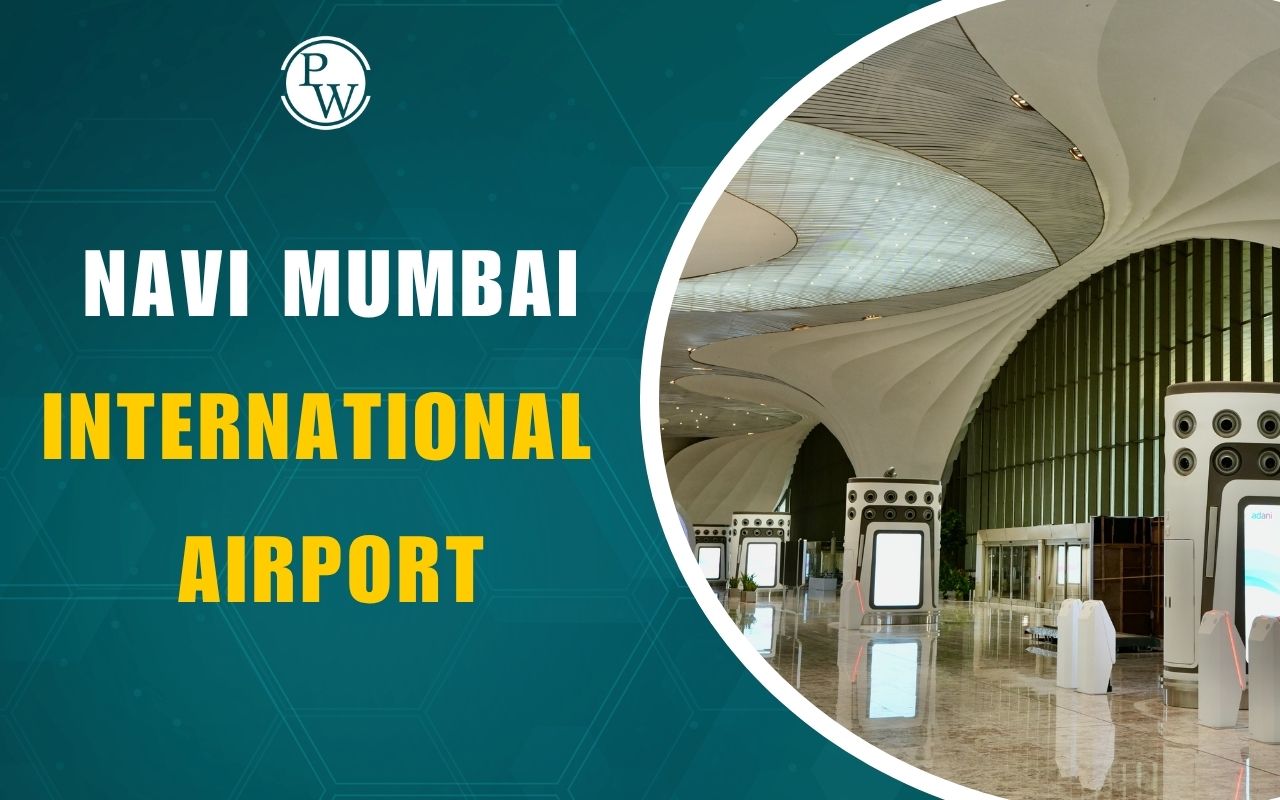

Agni 5 Ballistic Missile: India has successfully test-fired its Agni-5 ballistic missile from the Integrated Test Range at Chandipur, Odisha. It demonstrates a significant enhancement in long-range strike capability. The trial was conducted under the aegis of the Strategic Forces Command and validated all operational as well as technical parameters.
The missile’s reach of up to 5,000 km extends the deterrence of India to large areas of Asia and even Europe.
Agni 5 Ballistic Missile Successfully Tested
On August 20, 2025, India successfully test-fired the Agni-5 Intermediate Range Ballistic Missile from the Integrated Test Range (ITR), Chandipur in Odisha. The trial was conducted under the aegis of the Strategic Forces Command and validated all operational as well as technical parameters.
Agni-5 is capable of striking targets up to 5,000 km away, significantly enhancing India’s long-range strike capability. With this, India can cover almost all of Asia, including northern China, and parts of Europe.
What is Agni-5 Ballistic Missile?
Agni 5 Ballistic Missile is a three-stage, solid-fuelled, road-mobile intercontinental ballistic missile (ICBM) developed by DRDO under India’s Agni missile program. Agni-5 belongs to the Agni missile family, which already includes Agni-1 to Agni-4. These earlier versions are capable of ranges between 700 km and 3,500 km and have been operationally deployed. With Agni-5, India extends its reach beyond continental boundaries, reinforcing its second-strike capability.
| Agni-5 Ballistic Missile Specifications and Strategic Capabilities | |
| Parameter | Details |
| Type | Three-stage solid-fuel road-mobile ICBM |
| Developer | DRDO (with Bharatl Dynamics Limited for production) |
| Range | 5,000–5,500 km (India claims); up to 7,000–8,000 km possible |
| Deployment Status | Active; user trials completed; inducted since ~2019 |
Development of Agni Missiles
The Agni missile series was developed as part of India’s Integrated Guided Missile Development Program (IGMDP). It was launched in 1983, which also produced the Prithvi, Nag, Akash, and Trishul missiles. Initially, it was conceptualized by DRDO as a technology demonstrator for validating re-entry vehicle systems.
Key Milestones in Development:
The Agni missile was developed using two existing boosters: a solid-fueled first stage from India’s SLV-3 space launch vehicle and a modified Prithvi-I body for the upper stage.
1989: First flight test of the Agni demonstrator.
1992: Upgraded Agni demonstrator tested with a manoeuvring re-entry vehicle and an open interstage design.
1994: DRDO conducted the third flight test of the upgraded demonstrator.
Later, the Agni demonstrator was repurposed as a single-stage ballistic missile, Agni-I, marking the beginning of the operational Agni series.
Question Asked in UPSC Regarding Ballistic Missile
UPSC Science & Technology - 2023
|
Consider the following statements: 1. Ballistic missiles are jet-propelled at subsonic speeds throughout their flights, while cruise missiles are rocket-powered only in the initial phase of flight. 2. Agni-V is a medium-range supersonic cruise missile, while BrahMos is a solid–fuelled intercontinental ballistic missile. Which of the statements given above is/are correct? (a) 1 only (b) 2 only (c) Both 1 and 2 (d) Neither 1 nor 2 Ans: D |
Types of Agni Missiles
The Agni missile series forms the backbone of India's strategic deterrence architecture. It was introduced under DRDO's missile development. These missiles vary by range, payload, stages, and technological sophistication. Below is a structured overview of the types of Agni Missiles:
Agni - I: A single-stage short-range ballistic missile (700–1,200 km) developed post-Kargil to fill the gap between Prithvi-II and Agni-II.
-
Range: 700–1,200 km
-
Type: Single-stage, short-range (SRBM) solid-fuel missile
-
Deployment: Road- and rail-mobile (TELs)
-
Payload: Heavy-duty; 1,000–2,500 kg (conventional or nuclear)
-
Notable: Developed rapidly post-Kargil; filled gap between Prithvi-II and Agni-II
Agni-II: A two-stage medium-range missile (2,000–3,500 km) with advanced navigation and high accuracy.
-
Range: 2,000–3,500 km (extendable to 3,000 km by reducing payload)
-
Type: Two-stage MRBM solid-propellant
-
Payload: ~1,000 kg warhead
-
Features: Advanced navigation, high accuracy (30–40 m CEP), PBV with maneuverable re-entry vehicle
Agni-III: A compact two-stage intermediate-range missile (~3,500 km) known for precision and rail mobility.
-
Range: ~3,500 km (some sources suggest 3,000–5,000 km)
-
Type: Two-stage, IRBM solid-fuel
-
Payload: ~1,500 kg
-
Features: Highly accurate (CEP ~40 m), compact for rail-mobile deployment, sophisticated navigation with RLG-INS
Agni-IV: A modern IRBM (up to 4,000 km) featuring composite motors, advanced computers, and high accuracy.
-
Range: Up to 4,000 km
-
Type: Two-stage, solid-propellant IRBM
-
Payload: ~1,000 kg
-
Features: Composite rocket motors, 5th-gen onboard computer, MINGS + RINS navigation, CEP < 100 m, road-mobile launcher
Agni-V: India’s three-stage intercontinental ballistic missile (5,000–5,500 km), canisterized and MIRV-capable.
-
Range: 5,000–5,500 km (some estimates up to 8,000 km)
-
Type: Three-stage, solid-fuel ICBM
-
Payload: ~1,500 kg nuclear warhead, MIRV-capable
-
Features: Canisterized cold-launch, fire-and-forget capability, part of India’s strategic deterrent
Agni-P (Prime): A new-generation MRBM (1,000–2,000 km) with lightweight composites, canister launch, and MaRV capability.
-
Range: 1,000–2,000 km
-
Type: Two-stage, canisterized MRBM
-
Payload: ~1,000 kg
-
Features: Lightweight composite structure, advanced navigation (RLG + MINS + GNSS), MaRV-capable, train and road deployable
Agni 5 Ballistic Missile FAQs
What is the range of Agni 5 Ballistic Missile?
How many Agni missiles does India have?
Who developed the Agni-5 missile?
What type of missile is Agni-5?













